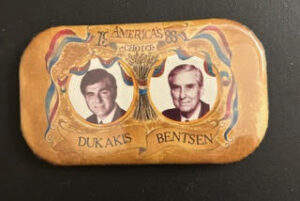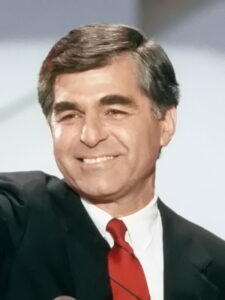
The Wild Ride of 1988
The 1988 Democratic presidential primary was one of the most chaotic and unpredictable in modern American political history. It was a wide-open contest that reflected a party in transition, struggling to find its identity in the post-Reagan era. No other Democratic primary race before or since has featured as many different primary winners as the 1988 race. What began with a clear front-runner ended in a political free-for-all that captured the volatility and drama of American electoral politics.
The presumptive favorite at the outset was Senator Gary Hart of Colorado. Hart had been the runner-up in the 1984 Democratic primaries, finishing second to former Vice President Walter Mondale. With his youthful energy, moderate appeal, and forward-looking message, Hart seemed to represent the next generation of Democratic leadership. By the time 1988 rolled around, he was widely expected to secure the nomination with relative ease.
The Hart Scandal
But Hart’s campaign was derailed before it even had a chance to build momentum. In the fall of 1987, news broke that Hart had been involved in an extramarital affair with a woman named Donna Rice. The scandal, made all the worse by Hart’s earlier dare to the press to “follow me around,” dominated headlines. A photo of Rice sitting on Hart’s lap aboard a yacht named “Monkey Business” became emblematic of the controversy. Initially denying the affair, Hart eventually bowed to the mounting pressure and suspended his campaign. Though he briefly re-entered the race in early 1988, the damage was irreparable. His fall from grace opened the door to a crowded and unpredictable field.
The Race Without a Clear Leader
With Hart out of the way, the Democratic nomination became a wide-open race. Five different candidates would go on to win individual primaries and caucuses, highlighting the party’s fractured nature. The major contenders included civil rights leader Jesse Jackson, who energized voters with a historic and passionate campaign; Senator Al Gore of Tennessee, a youthful centrist voice from the South; Representative Dick Gephardt of Missouri, who emphasized labor and economic issues; and Senator Paul Simon of Illinois, known for his bow tie and earnest demeanor (not to be confused with the famous singer-songwriter of the same name).
Dukakis Emerges from the Pack

Ultimately, it was Massachusetts Governor Michael Dukakis who emerged as the nominee. Dukakis ran as a technocratic, no-nonsense manager, touting his record of economic success and governmental efficiency in Massachusetts. To bring regional and ideological stability to the ticket, Dukakis selected Texas Senator Lloyd Bentsen as his running mate. Bentsen, a seasoned lawmaker with deep Southern roots and conservative credibility, was seen as a strategic pick to appeal to moderate and swing voters in the South.
Following the Democratic National Convention, the Dukakis-Bentsen ticket surged in the polls. For a brief moment, they held a comfortable lead over the Republican ticket of Vice President George H. W. Bush and Indiana Senator Dan Quayle. But the momentum didn’t last.
From Momentum to Missteps
A series of campaign missteps and public perception issues quickly eroded Dukakis’s advantage. One of the most infamous moments came when Dukakis participated in a photo opportunity riding in a military tank—a move meant to counter criticisms that he was weak on defense. Instead, the image backfired. The oversized helmet and his awkward appearance became a punchline and political liability, reinforcing the narrative that Dukakis was ill-suited to lead on national security.
Another blow came during a televised presidential debate, when Dukakis was asked whether he would support the death penalty if his wife were raped and murdered. His answer, a calm and rational “no,” delivered without a hint of emotion, stunned viewers. It may have been intellectually consistent with his principles, but to many voters, it came off as robotic and unfeeling—an image that plagued the rest of his campaign.
Election Day Results: A Harsh Reality
Despite these setbacks, Dukakis did manage to carry ten states on Election Day—a more substantial showing than any Democrat since Jimmy Carter’s victory in 1976. However, it wasn’t enough. George H. W. Bush won in 40 states and secured both the Electoral College and the popular vote with ease.
A Candid Conversation with Michael Dukakis
The following year, I had the chance to meet Dukakis at a health care conference. He was remarkably gracious, thoughtful, and patient, taking nearly ten minutes to talk with me about his campaign and the lessons he had learned from it. He acknowledged his mistakes without defensiveness and spoke candidly about how he had moved on. What struck me most was his humility. He shared a quiet anecdote: on Inauguration Day in 1989, he didn’t attend the ceremony. Instead, he packed a sandwich from home, stayed in, and watched George H. W. Bush’s inauguration on television. Just a regular guy.
That small moment of introspection said a lot. In an era of political theater and spin, Dukakis reminded me that behind every campaign is a real person—flawed, human, and capable of grace even in defeat.
